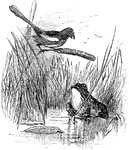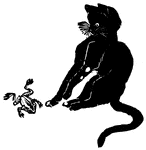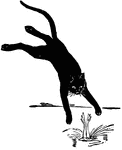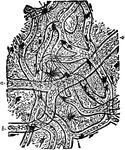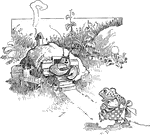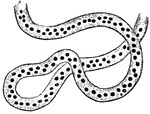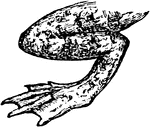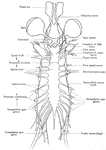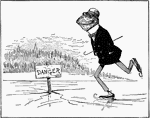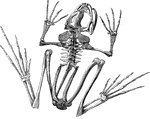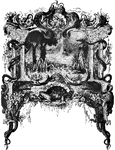
Aesop's Fables
The Frogs Who Wanted a King. The log thrown down by Jupitor in answer to the frogs' request for a king.

Aesop's Fables
The Frogs Who Wanted a King. The stork sent by Jupitor in answer to the frogs' request for a king.

Angler
"The fishing frog is three to five feet long. It has an enormous mouth, armed with numerous pointed…
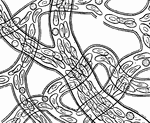
Circulation of blood
"Showing how the circulation of blood in the web of a frog's foot looks as seen under the microscope."…

Bufo Toad
"Agua-Toad (Bufo marinus), a very large and common South American toad, with enormous parotid glands."-Whitney,…
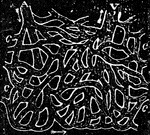
Capillaries in Frog's Foot
Capillaries (C) in the web of the frog's foot connecting a small artery (A) with a small vein (V).
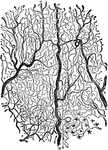
Capillary Network
A small portion of the capillary network as seen in the frog's web when magnified about 25 diameters.…

Circulation of a Frog
A diagram of the circulation of a frog. Labels: 1, The pericardium. 2, The single ventricle. 3, The…

Cystignathidae
An amphibian with a toothed upper jaw and subcylindric or little dilated sacral diapopyses.

Dissected Frog
"Frog with the left side cut away and some of the organs pulled downward. a, aorta leading from the…
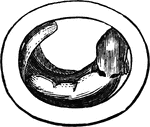
Embryo
"Figure 1 represents the embryo as it appears several days after the egg is deposited." — Goodrich.…

Form of the embryo
"Figure 2 gives an outline of its form; the arrows at the side of the head show the currents of water…
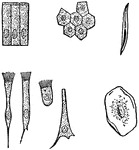
Various kinds of epithelial cells
"A, columnar cells of intestine; B, polyhedral cells of the conjuctiva; C, ciliated conical cells of…
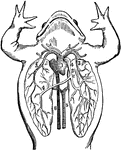
Frog
The heart and lungs of a frog. 1: Heart. 2: Arch of the aorta. 3: Pulmonary artery. 4: Pulmonary veins.…

Frog Egg
"The Tadpole is the larva of the anurous amphibia, sometimes so far extended as to include larvaæ…

Frog Eggs
"The Tadpole is the larva of the anurous amphibia, sometimes so far extended as to include larvaæ…
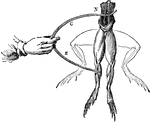
Frog Experiment
"Galvani found that whenever the nerves of a frog's leg were touched by one metal and the muscles by…

Leg of Frog
This illustration shows the leg of a frog. P. Pelvis, FE. Femur, TI. Tibia, FI. Fibula, TA. Tarsus,…
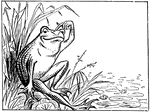
Frog Sitting on Bank and Scratching Head
An illustration of a frog sitting on the bank of a pond and scratching his head.
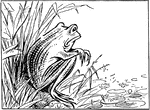
Frog Sitting on Bank Looking at Pond
An illustration of a frog sitting on the bank of a pond looking out into the water.
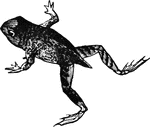
Frog with tail
Nearing the end of its development, a gradually shrinking tail is all that remains of the tadpole.

Circulation of Blood in a Frog's Foot
The circulation of the blood in the web of a frog's foot. A, an artery; B, capillaries crowded with…
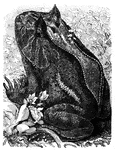
Alphabet Frog (Ceratophrys Boiei)
"At their birth they respire by means of gills, and consequently resemble fishes. As they progress in…
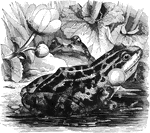
Edible frog
"It is rather larger than the common frog, and its nocturnal croakings are so loud and disagreeable,…
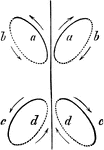
Ellipses of Swimming Frog
A diagram showing the motions a young frog makes while swimming. In this stage of life, the frog makes…

Green-tree frog
The green-tree frog is distinguished by suckers under its toes which enables him to cling to any tree…

Loops of Swimming Frog
A diagram showing the motions a young frog makes whilst swimming. In this stage of the frog's life,…

Swim Lines of Frog
A diagram demonstrating the motion a frog makes whilst swimming. In this stage of the frog's life, the…
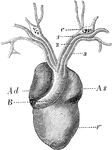
Heart of a Frog
The heart of a frog (Rana esculenta) from the front. Labels: V, ventricle, Ad, right auricle; As, left…

Human Leg (Front View), and Comparative Diagrams showing Modifications of the Leg
This illustration shows a human leg (front view), and comparative diagrams showing modifications of…

Vertebral Column of Hymenochirus
African dwarf frogs of genus Hymenochirus, also known as dwarf aquatic frogs, are frogs native to Sub…
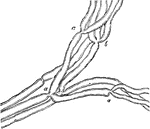
Muscular Nerve Showing Division of Fiber
Small branch of a muscular nerve of the frog, near its termination, showing division of the fibers.…
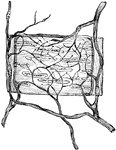
Nerves in the Artery of a Frog
Ramifications of nerves and termination in muscular coat of a small artery of the frog.

Nurse Frog
"A genus of anurous amphibians, or tailless batrachians, of the family Discoglossidæ, sometimes…
